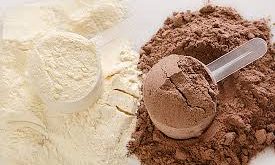Diwali, the festival of lights, brings joy and vibrancy to our lives. As we embrace the beauty of diyas and fireworks, it’s crucial to prioritize the safety of our most precious gift – our eyes.
While Diwali brings an array of colors and excitement, it also brings an increased risk of eye injuries, especially for those directly handling firecrackers and even bystanders exposed to the dazzling displays on the streets.
Understanding the Risks:
- High-risk Individuals:
- Over 50% of bystanders and individuals handling firecrackers face a heightened risk of sustaining eye injuries.
- Street by-passers are particularly susceptible to injuries caused by ignited firecrackers in the streets.
- Mode of Injury:
- Ocular injuries can range from mild irritation and corneal abrasions to severe complications like retinal damage and open globe injuries leading to potential blindness.
- Chemical injuries result from the gunpowder in crackers, causing irritability and watering of the eyes.
- Smoke and fumes emitted by firecrackers can also lead to laryngitis and other throat infections.
- Sparklers, burning at temperatures as high as 1,800° F, pose a significant threat, causing third-degree burns and necessitating heightened precautions.
- Major Ocular Injuries:
- Open globe injuries involve a full-thickness injury to the eye wall.
- Closed globe injuries impact the globe without a full-thickness ocular wall laceration.
- Contusions result in bruises around the eye.
- Lamellar lacerations cause partial-thickness wounds of the eyewall.
- Lacerations are full-thickness injuries caused by sharp objects.
- Penetrating injuries involve an open globe injury with an entrance wound.
- Perforating injuries result in an open globe injury with both entrance and exit wounds.\
Immediate First Aid and Treatment:
- DO’s and Don’ts
- Refrain from rubbing or scratching your eyes.
- Thoroughly wash your eyes and face.
- If irritation or foreign bodies are present, continuously flush the eyes with water.
- Avoid attempting to remove large or stuck particles; seek immediate medical attention.
- Keep eyes closed and consult an eye doctor promptly.
- For chemical exposure, irrigate eyes and under the eyelids with water for a minimum of 30 minutes. Seek immediate professional help.
- DO’s and DON’Ts ( for Children):
- Instruct children not to rub or apply pressure to affected eyes.
- Discourage the use of OTC (Over-the-Counter) medicines, including pain relievers.
- Never permit children to play with fireworks without guidance and supervision.
Precautions During Celebrations:
- Be Cautious:
- Choose open spaces for bursting crackers, wear protective goggles, and wash hands thoroughly.
- Close supervision is crucial for children playing with fireworks. Any injury should be addressed promptly by seeking professional help.
- Keep a bucket of water and sand readily available for accidental fires.
- Safely store fireworks in closed boxes, away from the reach of children.
- Maintain a safe distance while lighting and watching firecrackers.
- Remove contact lenses before bursting crackers; opt for protective eyeglasses.
- Properly defuse used fireworks by soaking them in a water bucket before disposal.
- Wear sturdy slippers to avoid accidental stamping on burnt crackers.
As we revel in the festivities of Diwali, let’s infuse the spirit of safety into the festival of lights. Embracing these guidelines ensures a Diwali filled with joy and devoid of injuries, safeguarding our most precious sense: our sight.
Dr. Agarwals Eye Hospital have kept emergency services available to the people in case of any unfortunate event of eye injury, please contact, 7338884826
Make Diwali more safe, more green and more healthy.
- By: Dr Sujatha T S
(Zonal Head – Clinical services, Dr. Agarwal’s Eye Hospital)
 Newspatrolling.com News cum Content Syndication Portal Online
Newspatrolling.com News cum Content Syndication Portal Online






